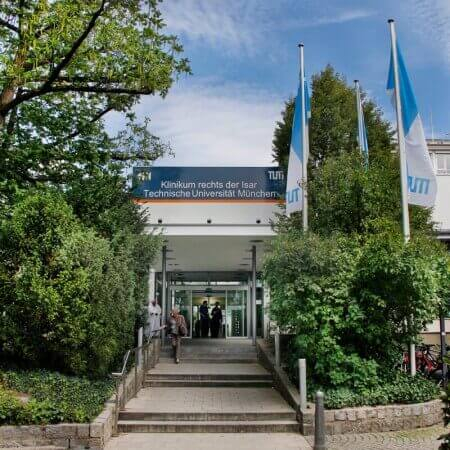About the disease
Diabetic retinopathy is disease of an eye, which mainly occurs because of diabetes. Diabetic retinopathy develops due to damage of retinal vessels of the light-sensitive tissue at the back of the eye. This disease is believed to occur to 30% of patients with diabetes. Diabetic retinopathy is most likely to develop among people who have either type first or second of diabetes. According to NHS, medical site, children with diabetes who are over 12 should regularly check up their eyes, because they are in higher risk. New studies showed that conventional therapy and intensive management of diabetes reduces probability of DR appearance by 74% and occurrence of proliferative retinopathy - by 57%.
Types of diabetic retinopathy:
- Nonproliferative DR, which is mostly characterized by occlusion, blurring and increased permeability of some retinal vessels.
- Preproliferative DR is a more severe stage of this disease, which precedes the appearance of proliferative retinopathy.
- Proliferative diabetic retinopathy develops if there was occlusion of capillaries and extensive areas of retina were damaged.
- Diabetic macular edema which is the last stage of diabetic retinopathy is characterized by loss or damage of central portion of the retina. This complication does not always result blindness, but a person can lose ability to read, concentrate or distinguish the smallest objects. Macular edema is common for people with proliferative form of DR, but it can also occur in nonproliferative DR.
As it was mentioned before, DR is caused by diabetes. It happens because excessive amount of sugar in blood destroys certain vessels that bring nourishment and blood supply to retina. Without these vessels eye start to develop its own blood vessels, but they can not work as effectively as proper ones did, and then there is leakage, which destroys retina.
Also people who do not check their blood sugar level regularly can develop diabetic retinopathy. In rare cases high blood pressure and pregnancy can also cause DR.
Symptoms
- Blurriness
- Contorted color and object perception
- Spots
- Dark areas in vision
In its early forms, diabetic retinopathy is almost always painless and patient might not even notice loss of vision. As disease progresses, a person can develop intraocular hemorrhage, accompanied by appearance of veil in front of the eye and strange dark spots, which disappear after some time. Massive vitreous hemorrhage can lead to complete loss of vision. Macular edema can also cause an appearance of veil in front of an eye. It can become difficult to work with small objects or read.
Diagnosis
Diagnosis is usually done during simple examination of diluted pupils to examine the state of retina. Usually, he uses special drops that can significantly dilate pupils. These drops can cause blurring of vision, but it always wears off after several hours. Strange new blood vessels or swelling of retina can indicate that a patient has diabetic retinopathy. Some abnormalities in optic nerve can also indicate presence of DR. Angiography helps to make a picture of an eye and assess its state for any changes in its structure. Tomography can also show pictures of an eye and it also determines the thickness of retina.
Treatment
- Vitrectomy is required if there was massive intraocular hemorrhage or if proliferative retinopathy caused significant decrease of vision. During vitrectomy an eye surgeon removes blood clots from eye cavity. If possible, he also removes the back of hyaloid membrane which is located between retina and vitreous body. This hyaloid membrane does not play any important role in eye function, but it can cause the development of proliferative retinopathy.
- Laser coagulation can restore functionality of the retina. In this treatment doctor uses heat to destroy leaking and damaged blood vessels. Laser treatment is more preferable than surgery, as it can be performed on an outpatient basis and it also has less complications. Laser treatment mainly aims to destruct areas of retinal hypoxia, which is a source of newly-formed blood vessels that cause retina leakage. Laser can also increase direct entry of oxygen from retina choroid and provide thermal coagulation of newly formed blood vessels to protect them from spreading and causing vision problems. For diabetic retinopathy treatment laser can be applied throughout all parts of retina, excluding only its central parts. The newly-formed blood vessels undergo focal laser irradiation. This surgical method is especially highly effective in early treatment and cure rate is almost 100%. In severe cases effectiveness of laser treatment is reduced. If a person has diabetic macular edema laser exposures of central parts of retina can also be applied. Long-term treatment effects are largely determined by the stage of diabetes and by extent of damage that excessive blood sugar level causes to eyes.
- Conservative treatment is usually applied in combination with other treatment options.. Patient with diabetic retinopathy is recommended to spend much time sitting with closed eyes. This simple method facilitates bleeding of vessel thrombosis. If there was a sufficient increase of optical media transparency after conservative treatment, laser treatment is required. If there was no increase of transparency, he may need to undergo vitrectomy.
Most patients who suffered from diabetes more than 10-12 years have some form of retinal lesion problem. Careful monitoring and assessment of glucose levels, dietary restrictions and healthy lifestyle can reduce risk of blindness by several times. However, the most effective preventive measure for people with a long-term diabetes is regular examination at an ophthalmologist.
Authors:
This article was edited by medical experts, board-certified doctors Dr. Nadezhda Ivanisova, and Dr. Bohdan Mykhalniuk. For the treatment of the conditions referred to in the article, you must consult a doctor; the information in the article is not intended for self-medication!
Our editorial policy, which details our commitment to accuracy and transparency, is available here. Click this link to review our policies.
















